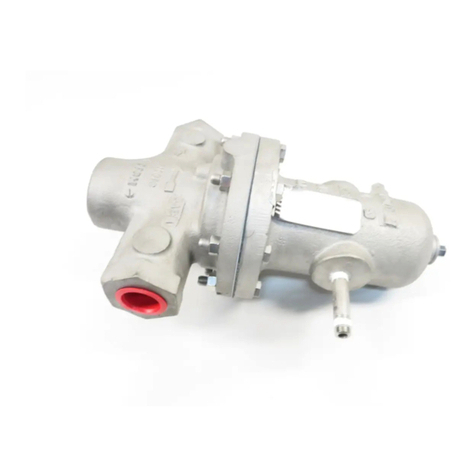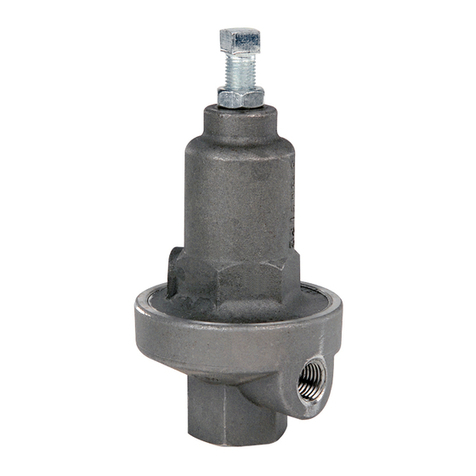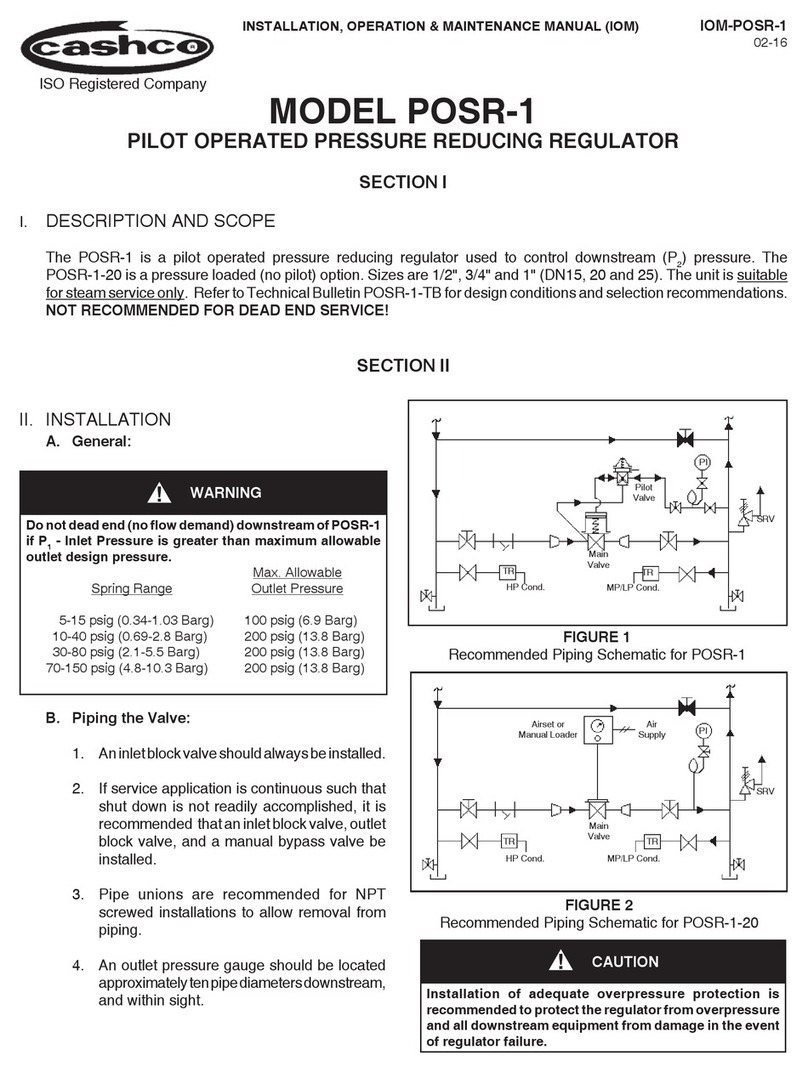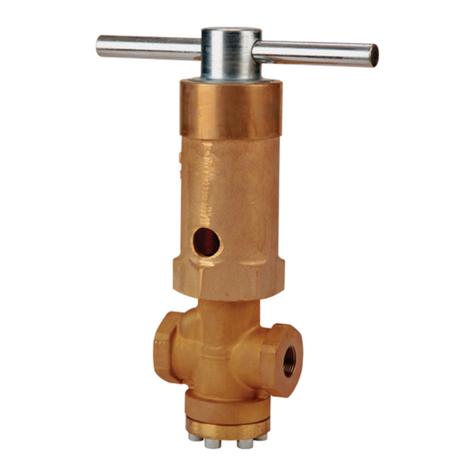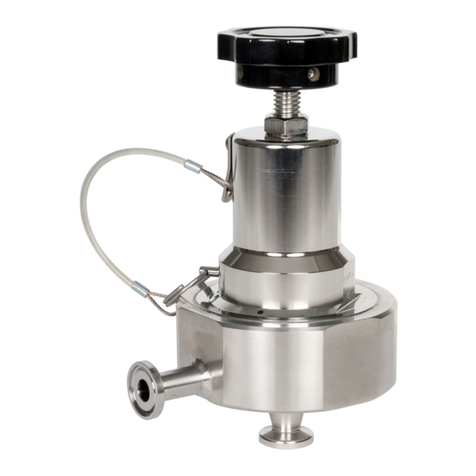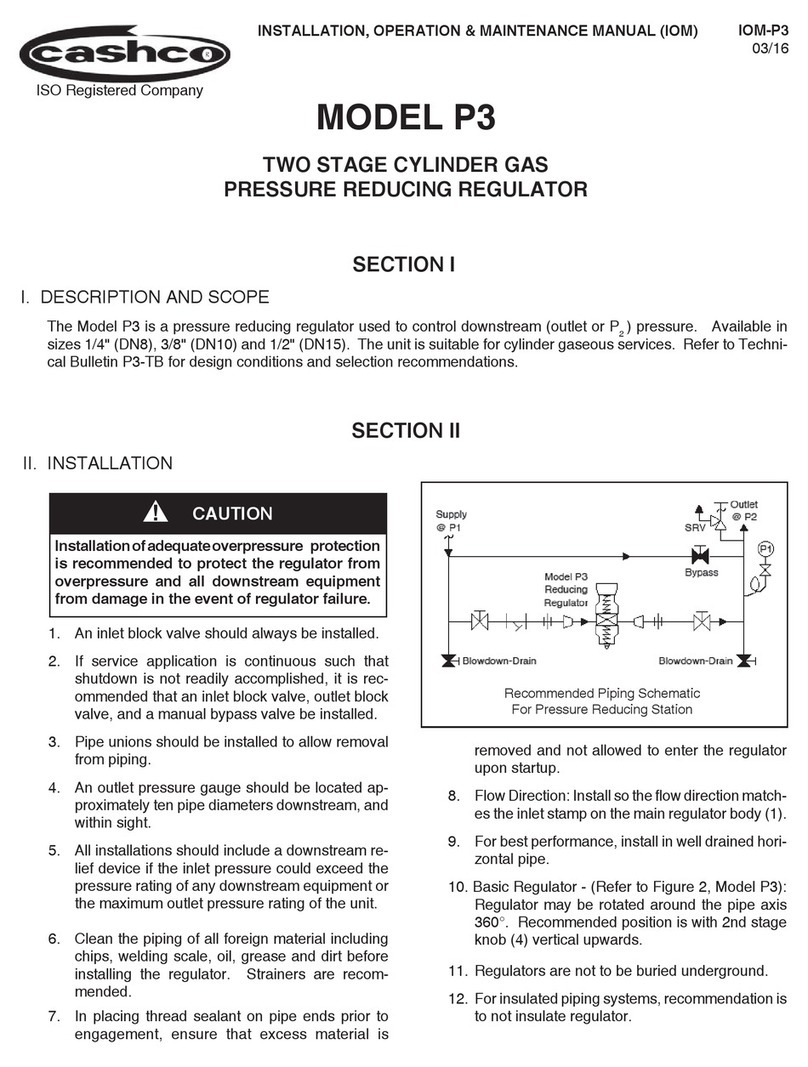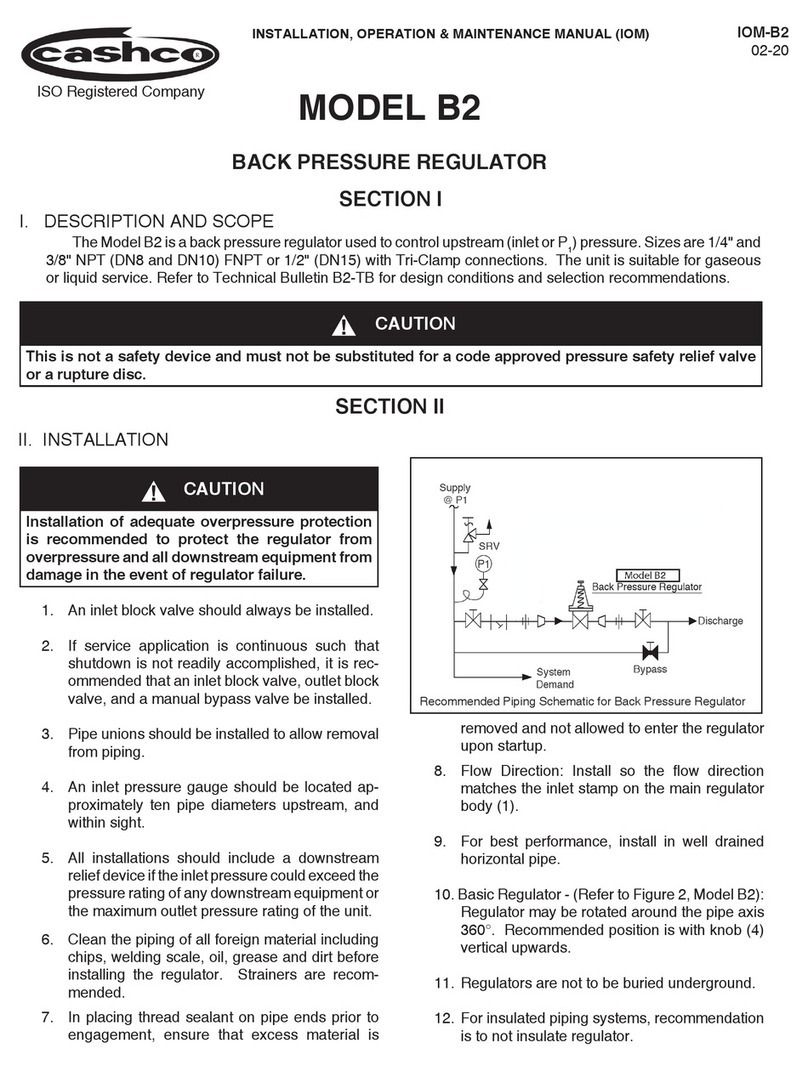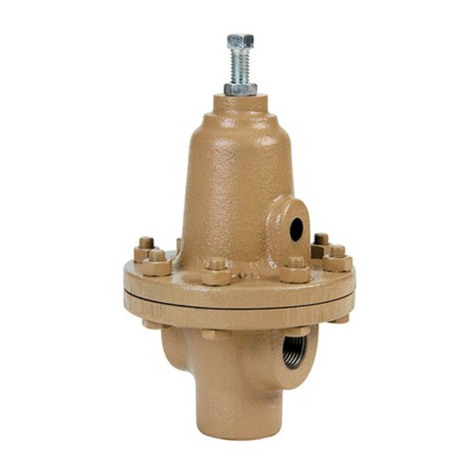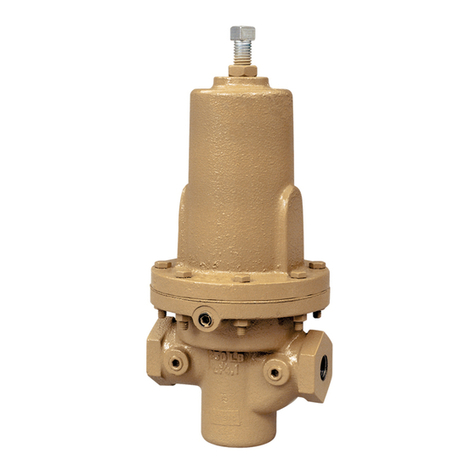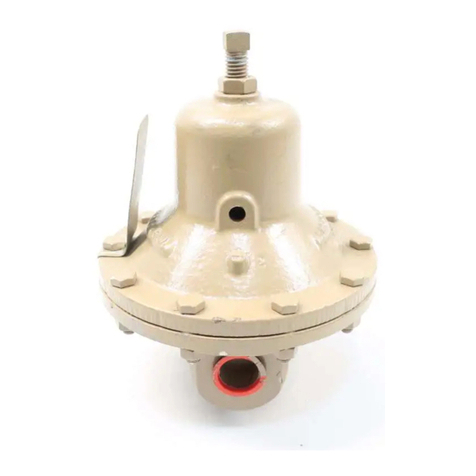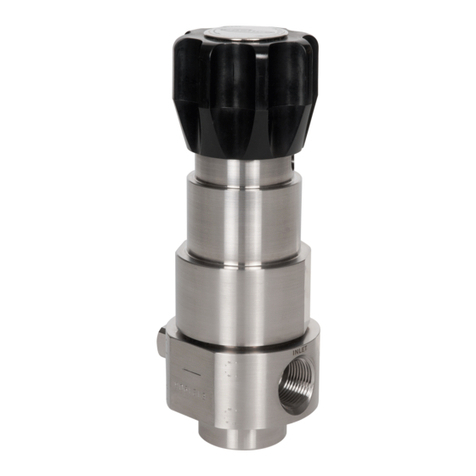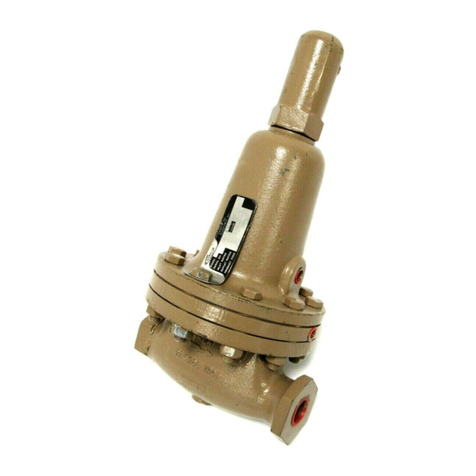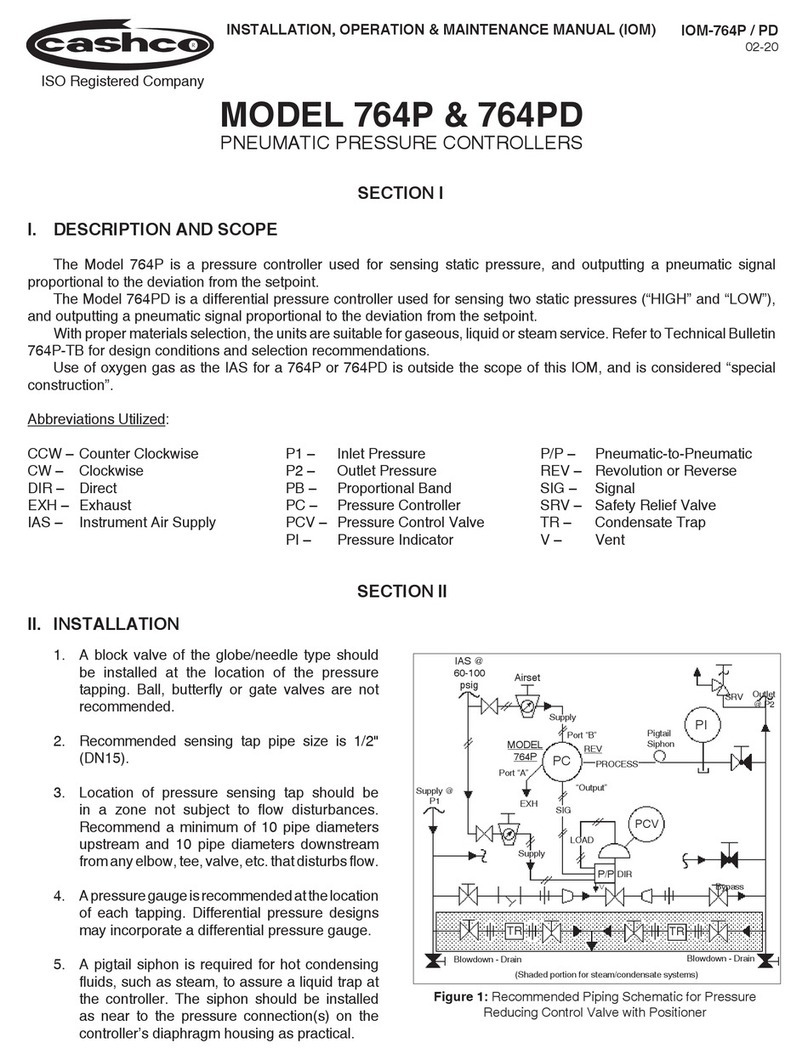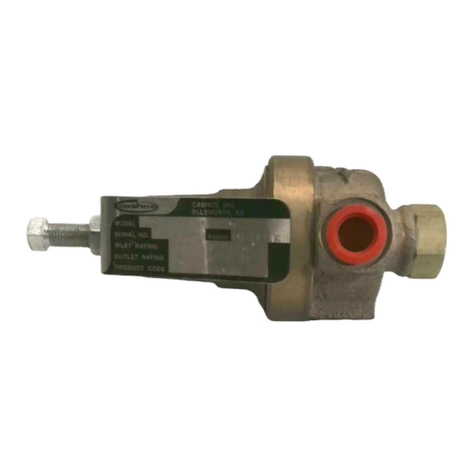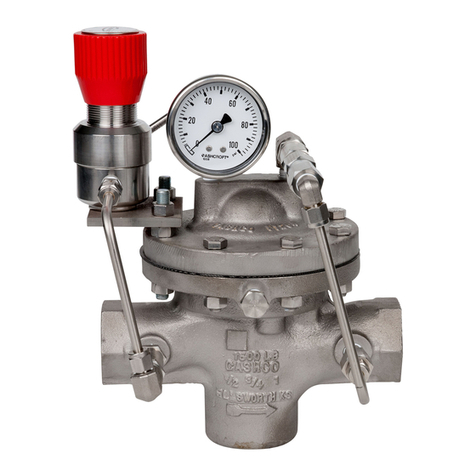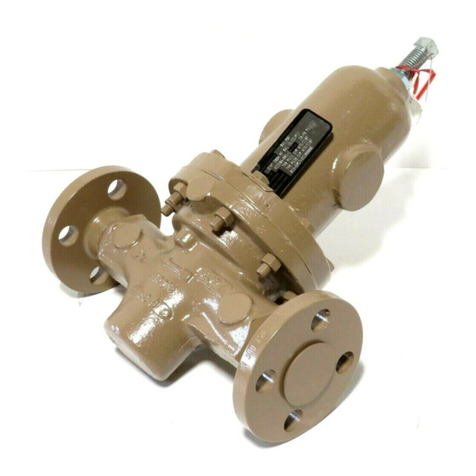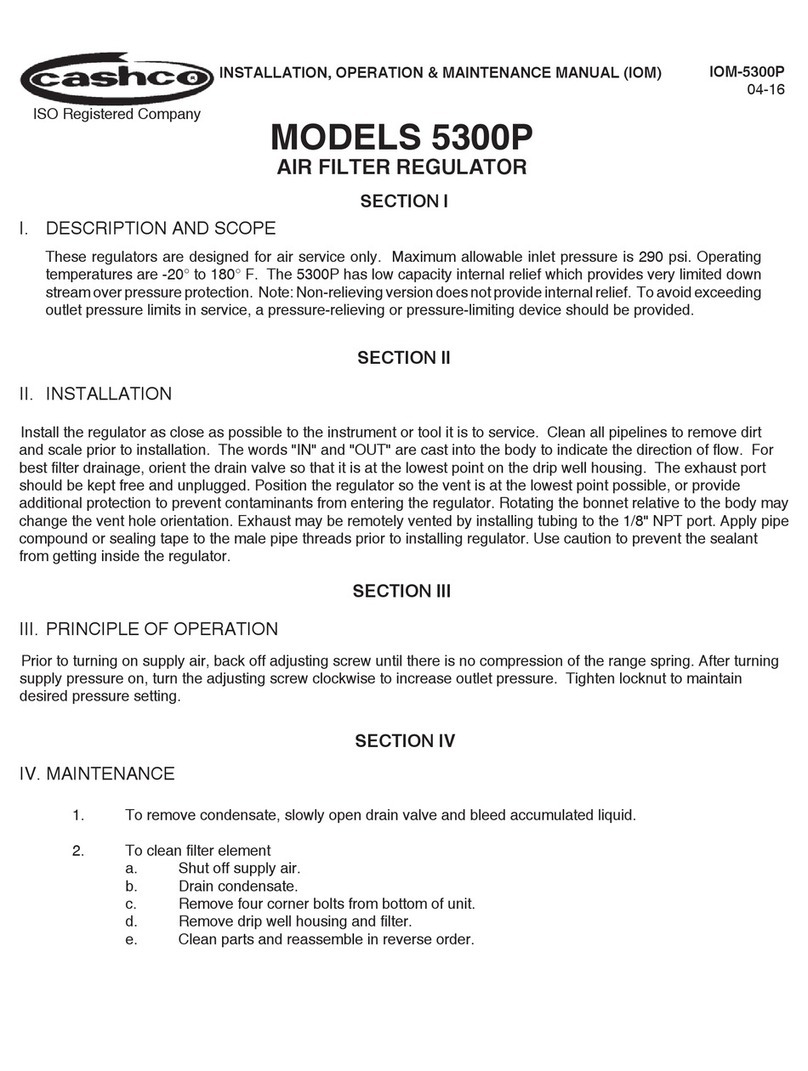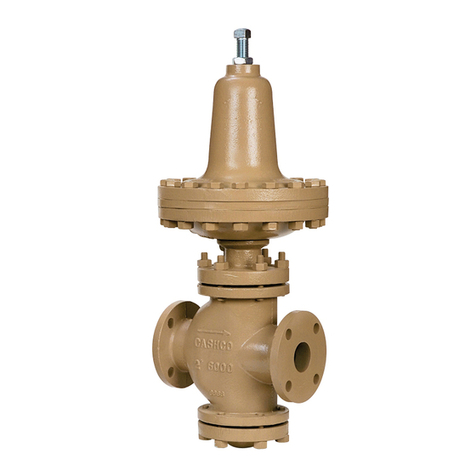
8 IOM-1000HP-Cryogenic
6. If a composition (soft) seat trim design is
utilized, use the following sub-steps:
a. Tighten the "flats" of the seat disc screw
(26) within a vise. Firmly hand-grip the
piston (24) and turn CCW to loosen the
seat disc screw (26). If too tight, place a
screwdriver or similar rod within the piston
(24) port holes and rotate. Remove the
piston (24), and inspect for raised burrs
around the port holes if a device is used
to loosen; deburr as required. NOTE: Do
not grip the piston (24) with a wrench.
b. Remove the seat disc (25) and clean the
recessed piston (24) area where the seat
disc (25) is placed. If the edges which
form the recess of the piston (24) are
worn, also replace piston (24) and seat
disc screw (26).
c. Place seat disc (25) into recessed end of
piston (24).
d. Place thread sealant on threaded portion
of seat disc screw (26), and manually
rotate piston (24) into seat disc screw (26)
(still fixed in vise) to secure seat disc (25).
Tighten seat disc screw (26) firmly. Do not
over-tighten to the point of embedding the
seat disc screw (26) into the seat disc
(25); the seat disc (25) should lay flat with
no rounded surface. A mechanical aid is
normally not required; hand-tightening is
normally sufficient.
7. If utilized, place piston spring (30) over
smaller end of cylinder (21).
8. Insert piston assembly (24 metal seat; 24, 25
and 26 comp. seat) into end of cylinder (21).
9. Place piston collar (23) over end of piston
(24), ensuring that the spherical surface of
the piston (24) and the piston collar (23) bear
against each other.
10. Clean the body (1) cavity through the
openings. Clean the "jet area" just inside
the body (1) outlet end through which the
piston (24) projects. Clean all parts to be
reused. NOTE: On regulators originally
supplied with Option 1000-55, "oxygen
clean", maintenance must include a level of
cleanliness equal to Cashco, Inc's., cleaning
standard #S-1134. Contact factory for details.
11. Use special care cleaning the flat mating
surfaces of the body (1) and cylinder (21)
shoulder, as this pressurized joint is metal-
to-metal with no gasket.
12. Lubricate the cylinder (21) threads lightly with
thread sealant. Insert the entire trim stack
into the body (1) opening and screw until
tightly seated. Using the hammer and wrench
handle, impact the cylinder (21) into the body
(1). NOTES: 1. Take special precaution to
keep piston collar from getting "cocked" at an
angle when inserted. 2. On 2" brass bodies
(1) with brass trim, a TFE body O-ring (43) is
utilized to seal between the body (1) and the
cylinder (21) sub-assembly. This O-ring is not
indicated on the drawing.
13. Inspect the body (1) outlet end to ensure that
the piston (24) is located nearly concentric to
the body (1) bore in the jet area with clearance.
Under no conditions should the piston (24) be
touching the body (1). Use two pencils or
similar shafts to place in inlet and outlet ends
of valve and alternately push on each end
of the piston (24) to ensure free movement.
(Total movement is approximately 1/8".)
14. Bench test unit for suitable operation and seat
leakage. NOTE: Regulators are not normally
tight shutoff devices. Pressure must build
above setpoint for best shutoff.
15. Soap solution test around cylinder (21)-to-
body (1) connection for leakage. Test
pressure should be a minimum of 100 psig at
the inlet, or actual service conditions if higher.
